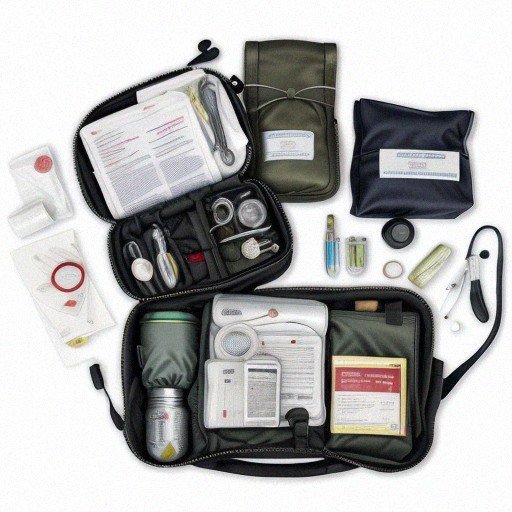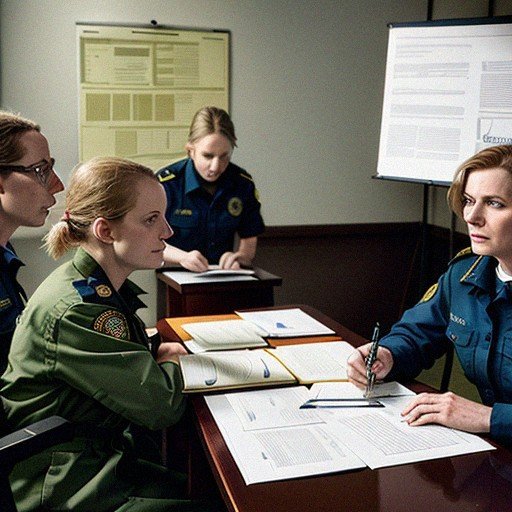When Does an Emergency Become a Disaster: Understanding the Critical Threshold
When an emergency occurs, it is important to respond quickly and effectively to prevent it from escalating into a disaster. However, the line between an emergency and a disaster can be blurry, and it is not always clear when one becomes the other. Understanding this transition is crucial for emergency managers, government officials, and community members to prepare and respond appropriately.
Emergencies can be defined as sudden and unexpected events that require immediate attention to prevent harm to people, property, or the environment. Examples include natural disasters like hurricanes and earthquakes, as well as human-made incidents like chemical spills or terrorist attacks. Emergencies are typically localized and can be managed by local responders with the help of neighboring jurisdictions.
However, when an emergency exceeds the capacity of local responders and requires outside assistance, it can escalate into a disaster. Disasters are characterized by their widespread impact and long-term effects on communities. They can result in significant loss of life, property damage, and disruptions to critical infrastructure and services. Disasters require a coordinated response from multiple agencies and levels of government, as well as the involvement of the private sector and community organizations.

Key Takeaways
- Emergencies are sudden and unexpected events that require immediate attention to prevent harm.
- Disasters are characterized by their widespread impact and require a coordinated response from multiple agencies and levels of government.
- Understanding the transition from emergency to disaster is crucial for effective emergency management and response.
Understanding Emergencies and Disasters
Definition of Emergencies
Emergencies are unexpected events that require immediate action to prevent harm to people, property, or the environment. Emergencies can be caused by natural disasters, such as hurricanes, floods, or earthquakes, or by human-made disasters, such as a terrorist attack or a chemical spill. Emergency preparedness is the process of preparing for and responding to emergencies. It involves developing emergency plans, training personnel, and practicing emergency response procedures.
Definition of Disasters
Disasters are large-scale events that cause significant damage to property, infrastructure, and the environment, and result in loss of life or injury to people. Disasters can be caused by natural events, such as hurricanes, earthquakes, or wildfires, or by human-made events, such as industrial accidents or terrorist attacks. Disaster preparedness is the process of preparing for and responding to disasters. It involves developing disaster plans, training personnel, and practicing disaster response procedures.
Difference Between Emergencies and Disasters
The main difference between emergencies and disasters is the scale of the event. Emergencies are smaller-scale events that can usually be handled by local emergency responders, such as police, fire, or medical personnel. Disasters are larger-scale events that require a coordinated response from multiple agencies, such as local, state, and federal government, non-governmental organizations, and private sector partners. In the United States, a major disaster is defined as an event that overwhelms the ability of local government to respond and requires assistance from the federal government.
In conclusion, understanding the difference between emergencies and disasters is important for emergency and disaster preparedness. Emergency preparedness and disaster preparedness involve developing plans, training personnel, and practicing response procedures to ensure that we are ready to respond to emergencies and disasters in a timely and effective manner. By being prepared, we can help mitigate the impact of emergencies and disasters and save lives.

Transition from Emergency to Disaster
When an emergency situation exceeds the response capabilities of a community or region, it can escalate into a disaster. The transition from an emergency to a disaster is not always clear-cut and can depend on several factors.
Assessment Process
The assessment process is critical in determining whether an emergency has escalated into a disaster. The assessment process involves evaluating the hazard, vulnerabilities, and capacities of a community or region. It is essential to identify and understand the natural hazards that can occur in a particular area and the vulnerabilities that can make a community or region more susceptible to the impacts of these hazards.
During the assessment process, we also evaluate the capacity of a community or region to respond to an emergency. This includes assessing the resources available, such as emergency services, medical facilities, transportation, and communication systems. We also consider the level of preparedness of the community or region, including the effectiveness of emergency plans and the level of training and education of emergency responders.
Factors Influencing the Transition
Several factors can influence the transition from an emergency to a disaster. One of the most critical factors is the magnitude of the hazard. A large-scale natural disaster, such as a hurricane or earthquake, can quickly overwhelm the response capabilities of a community or region and escalate into a disaster.
Another factor that can influence the transition is the duration of the emergency. A prolonged emergency can lead to resource depletion and exhaustion, making it difficult to sustain a response effort. The extent and severity of the impacts of the emergency on the affected community or region can also influence the transition.
The level of preparedness and response capacity of the community or region is another critical factor that can influence the transition from an emergency to a disaster. A lack of preparedness and response capacity can make it difficult to respond effectively to an emergency, leading to a more significant impact on the affected community or region.
In conclusion, the transition from an emergency to a disaster is a complex process that depends on several factors. The assessment process is critical in determining whether an emergency has escalated into a disaster. Factors such as the magnitude of the hazard, the duration of the emergency, and the level of preparedness and response capacity of the community or region can influence the transition.
Role of Emergency Managers
As emergency managers, our role is to prepare for, respond to, and recover from disasters. We are responsible for ensuring that our communities are ready to face any emergency situation that may arise. In this section, we will discuss the key areas of preparedness and planning, coordination and communication, and the importance of command procedures, knowledge, and skills.
Preparedness and Planning
Preparedness and planning are critical components of emergency management. By anticipating potential risks and hazards, we can take steps to minimize their impact on our communities. This involves developing emergency plans, conducting training exercises, and identifying and securing resources necessary to respond to a disaster.
As emergency managers, we work closely with local, state, and federal agencies, as well as non-governmental organizations, to ensure that our communities are prepared for any emergency situation. We also engage with the public to raise awareness and encourage individuals to take steps to prepare themselves and their families for potential disasters.
Coordination and Communication
Coordination and communication are essential during a disaster. Effective communication ensures that everyone involved in the response effort is aware of what is happening and what actions need to be taken. This involves establishing clear lines of communication and ensuring that all parties have access to the information they need to make informed decisions.
As emergency managers, we work closely with first responders, government agencies, and community organizations to coordinate the response effort. We also engage with the public to provide information and updates on the situation.
Command Procedures, Knowledge, and Skills
Command procedures, knowledge, and skills are critical to effective emergency management. During a disaster, it is essential that everyone involved in the response effort knows their role and responsibilities. This involves establishing clear command procedures and ensuring that everyone involved is trained and equipped with the necessary knowledge and skills.
As emergency managers, we are responsible for ensuring that our teams are well-trained and equipped to respond to any emergency situation. This involves developing and implementing training programs, conducting regular drills and exercises, and providing ongoing support and guidance to our teams.
In conclusion, emergency managers play a critical role in preparing for, responding to, and recovering from disasters. By focusing on preparedness and planning, coordination and communication, and command procedures, knowledge, and skills, we can ensure that our communities are ready to face any emergency situation that may arise.

Government Response and Legislation
When an emergency becomes a disaster, the government is responsible for responding to the crisis. This response involves various agencies and policies that work together to provide aid and support to those affected. In this section, we will discuss the government response and legislation related to disasters.
Stafford Act
The Robert T. Stafford Disaster Relief and Emergency Assistance Act (Stafford Act) is the primary legislation that governs federal disaster response. This act outlines the programs and processes by which the federal government provides disaster and emergency assistance to local, state, tribal, territorial, and insular area governments, eligible private nonprofit organizations, and individuals affected by a presidentially-declared disaster or emergency. The Stafford Act requires that all requests for a declaration by the President that a major disaster exists shall be made by the Governor of the affected state.
Defense Production Act
The Defense Production Act (DPA) is another federal law that allows the President to direct the domestic industrial base to produce critical goods and services needed for national defense. This act can also be used during emergencies to prioritize the production of essential goods and services needed for disaster response and recovery efforts.
Sandy Recovery Improvement Act
The Sandy Recovery Improvement Act (SRIA) was signed into law in 2013. This act was a response to the Hurricane Sandy disaster and aimed to improve the federal government’s response to future disasters. The SRIA made several changes to disaster response policies, including increasing the amount of assistance available to disaster survivors, improving coordination between federal agencies and state and local governments, and streamlining the disaster recovery process.
Overall, the government’s response to disasters involves a complex network of agencies, policies, and legislation. The state and federal government work together to provide aid and support to those affected by disasters. The Stafford Act, DPA, and SRIA are just a few examples of the legislation that guides disaster response and recovery efforts.
Community and Volunteer Involvement
When an emergency occurs, community and volunteer involvement can play a crucial role in mitigating its effects. However, it is important to understand the distinction between community preparedness and volunteer involvement, and how they can work together to build resilience.
Community Preparedness
Community preparedness refers to the actions taken by community stakeholders to prepare for and respond to emergencies. This includes developing emergency plans, identifying potential hazards, and establishing communication channels. By involving the community in the planning process, we can ensure that everyone is aware of potential risks and has a role to play in the event of an emergency.
One effective way to promote community preparedness is through public education campaigns. These campaigns can provide information on emergency preparedness, such as how to create an emergency kit, what to do during a disaster, and how to stay informed. By sharing this information with the community, we can help ensure that everyone is prepared to respond to an emergency.
Role of Volunteers
Volunteers can play a critical role in responding to emergencies. During a disaster, volunteers can provide essential services such as first aid, search and rescue, and shelter management. However, it is important to ensure that volunteers are properly trained and coordinated to ensure that their efforts are effective and safe.
One effective way to manage volunteers during an emergency is through the use of spontaneous volunteer management systems. These systems can help ensure that volunteers are properly trained and coordinated, and that their efforts are directed towards the most pressing needs.
In addition to spontaneous volunteer management systems, there are a number of volunteer organizations that specialize in disaster response. These organizations can provide trained volunteers and resources to help communities respond to emergencies.
By involving the community and volunteers in emergency preparedness and response, we can build resilience and ensure that we are prepared to respond to emergencies.
Media’s Role in Emergencies and Disasters
When an emergency or disaster occurs, the media plays a crucial role in disseminating information to the public. In the early stages of a crisis, the media’s primary focus is on providing accurate and timely information to the public about what is happening and how to stay safe. This is particularly important in the case of natural disasters such as hurricanes, earthquakes, and wildfires, where people may need to evacuate quickly to avoid danger.
The media serves as an emergency broadcast system to get vital information to the people who need it most. During a crisis, reporters are less concerned with investigative journalism or making stories more dramatic. They, and their audience, are more interested in knowing what happened and how to stay safe. In addition to traditional news outlets such as newspapers, radio, and television, social media platforms have become an increasingly important tool for disseminating information during emergencies.
However, the media’s role in emergencies and disasters is not limited to just providing information. They also play a critical role in shaping public perception and response to the crisis. The way that the media frames a crisis can have a significant impact on how people respond to it. For example, if the media portrays a crisis as a “natural disaster,” people may be more likely to view it as something beyond their control. On the other hand, if the media frames a crisis as a “man-made disaster,” people may be more likely to demand accountability and action from their government.
It is important to note that the media’s role in emergencies and disasters is not always positive. In some cases, the media may sensationalize a crisis or focus on sensational stories rather than providing accurate and useful information. This can lead to panic and confusion among the public, making it more difficult for emergency responders to do their jobs.
In conclusion, the media plays a critical role in emergencies and disasters by providing information to the public and shaping public perception and response. However, it is important for the media to be responsible and accurate in their reporting to avoid causing panic and confusion among the public.
Healthcare System’s Role
As healthcare professionals, we play a crucial role in managing emergencies and disasters. Our primary responsibility is to ensure the safety and well-being of our patients. In this section, we will discuss the role of nurses and how we handle medical emergencies.
Role of Nurses
Nurses are at the forefront of healthcare delivery during emergencies and disasters. We are responsible for providing care to patients in a timely and efficient manner. Our role includes:
- Assessing and triaging patients based on the severity of their condition
- Providing first aid and basic life support to stabilize patients
- Coordinating with other healthcare professionals to ensure optimal patient care
- Administering medications and treatments as ordered by the physician
- Providing emotional support to patients and their families
In addition to providing direct patient care, nurses also play a critical role in disaster preparedness and response. We are responsible for:
- Participating in disaster drills and training sessions to ensure readiness
- Developing and implementing emergency response plans
- Educating patients and their families on emergency preparedness
- Coordinating with local and state health departments to ensure a coordinated response
Handling Medical Emergencies
Medical emergencies can occur at any time, and it is essential to be prepared to handle them. As healthcare professionals, our primary goal is to stabilize the patient and provide necessary treatment. The following steps should be followed when handling a medical emergency:
- Assess the situation and ensure your safety and the safety of others.
- Call for help and activate the emergency response system.
- Assess the patient’s condition and provide first aid and basic life support as needed.
- Administer medications and treatments as ordered by the physician.
- Transport the patient to the nearest healthcare facility for further treatment.
It is essential to remain calm and focused during a medical emergency. Effective communication and teamwork are critical to ensuring the best possible outcome for the patient.
In conclusion, the healthcare system plays a vital role in managing emergencies and disasters. As nurses, we are responsible for providing direct patient care, disaster preparedness and response, and educating patients and their families on emergency preparedness. Handling medical emergencies requires quick thinking, effective communication, and teamwork to ensure the best possible outcome for the patient.
Impact of Disasters
Disasters can have a significant impact on human life, property, infrastructure, and the environment. In this section, we will explore the impact of disasters on mortality and morbidity, as well as property and infrastructure damage.
Mortality and Morbidity
Disasters can cause significant mortality and morbidity, especially in developing countries or areas with poor infrastructure. The World Health Organization defines a disaster as “a sudden ecologic phenomenon of sufficient magnitude to require external assistance.” Disasters can lead to death and injury due to direct physical trauma, exposure to hazardous materials, or lack of access to medical care.
According to FEMA, the number of deaths resulting from a disaster is one of the criteria used to determine the severity of a disaster. Mortality rates can vary depending on the type of disaster and the affected population. For example, a hurricane may cause more deaths in a coastal community than an earthquake in an urban area.
Disasters can also lead to long-term health effects, such as respiratory problems, mental health issues, and infectious diseases. These effects can be exacerbated by factors such as poor sanitation, overcrowding, and lack of access to healthcare.
Property and Infrastructure Damage
Disasters can cause significant damage to property and infrastructure, leading to economic losses and long-term disruption. The Federal Emergency Management Agency (FEMA) tracks disaster declarations, which are used to measure the number of disasters that occur yearly. Disasters can result in damage to homes, businesses, and public infrastructure such as roads, bridges, and power lines.
The cost of disaster-related property damage can be significant, with estimates ranging from billions to trillions of dollars. In addition to the direct cost of damage, disasters can also lead to indirect economic losses such as lost wages, decreased productivity, and supply chain disruptions.
Disasters can also lead to long-term infrastructure damage, such as erosion, landslides, and soil liquefaction. These effects can make it difficult to rebuild and recover from a disaster, leading to long-term economic and social impacts.
In summary, disasters can have a significant impact on human life, property, infrastructure, and the environment. Understanding the impact of disasters is essential for developing effective emergency preparedness and response plans.
Case Study: Puerto Rico and Hurricane Maria
When Hurricane Maria hit Puerto Rico on September 20, 2017, it was a Category 4 hurricane, and it was the worst natural disaster in the island’s modern history. The hurricane caused widespread devastation, and it was the third most destructive hurricane in the United States. The damage was estimated to cost about $90 billion.
The response to Hurricane Maria was slower and smaller than the response to Hurricane Irma in Florida and Hurricane Harvey in Texas. An objective study by BMJ Global Health found that the federal response to Hurricane Maria in Puerto Rico was significantly smaller and slower than the responses to Hurricane Irma in Florida and Hurricane Harvey in Texas. The study quantified the inequities in the US federal response to hurricane disasters in Texas and Florida compared with Puerto Rico.
The situation in Puerto Rico after Hurricane Maria was dire. The island’s infrastructure was devastated, and the people were left without power, water, and basic necessities. The search and rescue efforts were hindered by the lack of resources and the extent of the damage. The disaster relief efforts were slow to arrive, and the financing was insufficient to meet the needs of the people.
The experience of Hurricane Maria in Puerto Rico highlights the need for better emergency preparedness and disaster response. The lessons learned from this disaster can be applied to future disasters to improve the response and minimize the damage. We must ensure that our emergency response systems are well-equipped and well-funded to handle any disaster, no matter the location or the severity.







